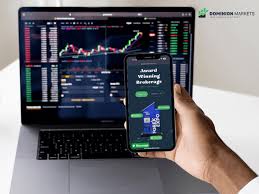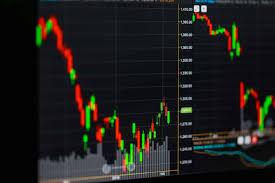
Understanding Maximum Leverage in Trading
Leverage is a powerful tool in the trading world, allowing traders to control larger positions with a smaller amount of capital. But what exactly is maximum leverage, and how can it affect your trading strategy? In this article, we’ll delve into the nuances of maximum leverage, offering insights to help you navigate this intricate aspect of trading. If you’re seeking a reliable platform for trading cryptocurrencies, consider checking out what is maximum leverage Minereum as a potential trading partner.
What is Leverage?
Leverage refers to the use of borrowed funds to amplify potential returns on an investment. In the context of trading, leverage allows you to control a larger position than your actual capital would typically permit. For instance, if you have $1,000 and your broker offers a leverage of 100:1, you can control a position size of $100,000. While this can lead to significant gains, it also increases the risk of substantial losses.
Maximum Leverage Explained
Maximum leverage is the highest ratio a trader can achieve by borrowing funds from a broker to trade, usually expressed as a ratio (e.g., 50:1, 100:1). Different financial markets and brokers will offer varying maximum leverage ratios based on the asset class and regulatory requirements. Depending on the market conditions, regulatory changes, and risk management policies, the maximum leverage can fluctuate. The general consensus is that higher leverage comes with higher risk, making it essential for traders to understand their own risk tolerance and strategy.
Types of Leverage
There are two primary types of leverage in trading: operational leverage and financial leverage.
Operational Leverage
Operational leverage refers to the use of fixed costs in a company’s operations. A company with a high operational leverage can significantly affect its profits through sales volume changes without creating additional fixed costs. While this is more relevant for businesses, understanding operational leverage is crucial for traders who assess company stocks.
Financial Leverage
Financial leverage is the more relevant type for traders, as it refers to how much debt a trader uses to finance their investments. In practical terms, a trader borrows capital from a broker to increase investment size. The formula for financial leverage is: financial leverage = total assets / equity. A higher ratio indicates greater financial risk.
Implications of Maximum Leverage
Using maximum leverage can create both opportunities and pitfalls in trading. Here are some factors to consider:

1. Enhanced Profit Potential
Higher leverage allows traders to maximize their profits on successful trades. For instance, if a trader with $1,000 and 100:1 leverage achieves a 1% profit, they effectively earn $1,000 instead of just $10.
2. Increased Risk of Loss
While riding the wave of potential profits is thrilling, maximum leverage can lead to significant losses. If the market moves against your position, the losses are also magnified. For example, a 1% loss on a $100,000 position equates to a $1,000 loss, which could wipe out an account with just $1,000 of capital.
3. Margin Requirement
Traders must understand the margin requirement associated with their leverage. Brokers typically require a certain percentage of the position size to be maintained as collateral. When trading with high leverage, the margin requirement is low, which might entice traders but can quickly lead to margin calls if the market moves unfavorably.
Choosing the Right Leverage
Understanding the right amount of leverage for your trading strategy is crucial. Here are some guidelines to consider:
1. Risk Management
Always implement risk management strategies. Only risk a small percentage of your trading capital on each trade, regardless of the leverage used. This practice not only protects your capital but also allows for a sustainable trading approach.
2. Start Low
If you’re new to trading, start with lower leverage to gain experience. As you become more familiar with market dynamics and develop refined trading strategies, you can gradually increase leverage if deemed appropriate.
3. Understand Market Conditions
Market conditions can significantly affect the effectiveness of high leverage. During volatile conditions, it may be wise to lower your leverage. Currency pairs, commodities, or stock markets can experience sudden swings, leading to rapid changes in your account balance.
Final Thoughts
Maximum leverage can be a double-edged sword in trading. While it can significantly amplify profits, the risks associated with high leverage are substantial and may lead to equally significant losses. Traders must exercise caution when utilizing maximum leverage and incorporate strong risk management practices. Understanding your own risk tolerance and financial goals is key to maximizing the potential benefits of trading with leverage. As always, continuous learning and adapting to market changes will contribute to your long-term success as a trader.
In the ever-evolving landscape of trading, knowledge is power. Don’t rush into high-leverage trades without adequate preparation and education. With time and experience, you can leverage the tools and resources available to you for better trading outcomes.
